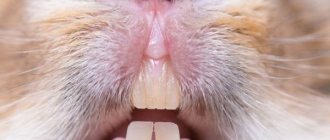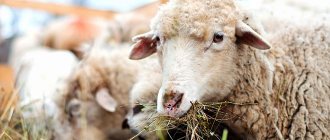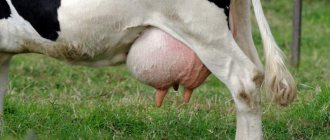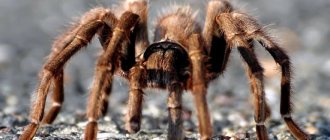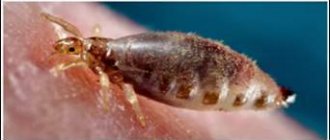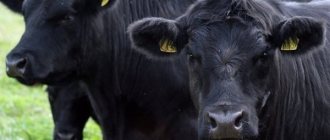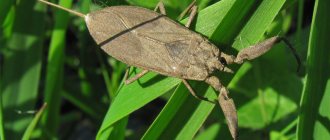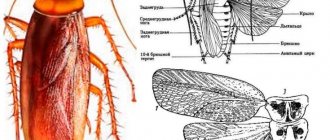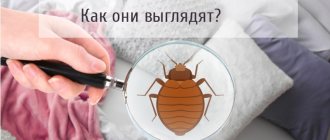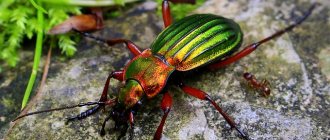Teeth and their role in eating
In general, cows were not always ruminants. They became this way under the influence of external circumstances. They do not have claws and fangs with which to defend themselves from the enemy, so the subconscious has taught the cows to eat quickly, without wasting time. So these artiodactyls developed the habit of first stocking up on food, and only then, in peace and quiet, calmly burping and chewing their reserves.
The formation and growth of teeth in a calf begins during the period when it is in the womb. At the time of birth, the cow's mouth already has 4 dental elements.
An adult has 32 teeth in its mouth. Of them:
- 8 pieces - incisors.
- 24 pieces are indigenous.
It is worth noting that the incisors are only on the bottom of the jaw. Instead of them, a rigid plate is formed on the top. The incisors are designed for cutting grass and have different sizes, the 2 largest are the front ones. All incisors are flat in shape with rounded edges. But the molars are distributed over both jaws, and symmetrically.
Cows don't have tusks. Instead, there are incisors of equal sizes. The front pair of incisors are called hooks.
Molars and premolars, which are located behind the toothless edge, are needed for grinding food.
Other parts of the oral cavity - lips, tongue and salivary glands - play a major role in food processing. The lips and tongue help to tear food into the mouth, and with the help of saliva it passes into the esophagus.
The upper jaw of the animal is slightly larger than the lower jaw. This allows you to alternate the process of chewing food - the cow can chew both to the right and to the left. But the biggest role in the digestive process belongs to the teeth.
Important! Due to constant chewing, cows' jaws are very mobile.
Oral cavity
The oral cavity of a cow is represented by the lips, tongue, cheeks, gums, palate, teeth, salivary glands, pharynx and tonsils. During eating, vegetation and other food enter the oral cavity, where chewing occurs. The structural features of a cow's teeth allow it to grind grass. The food itself is captured by the tongue and lips.
The upper jaw is wider than the lower jaw, allowing cattle to chew freely on either side. The tongue of cows is hard and performs the function of “turning” food in the oral cavity.
Structure
Cow teeth differ from each other in their location in the oral cavity and in their name. In addition, they have a special structure.
Incisors:
- Enameled crown. At the bottom of the crown there is dentin. There should always be pulp underneath. It consists of nerve endings.
- At the very end of the gum is the neck.
- The tooth root is located in the cavity, which is covered with a cement mixture.
Indigenous:
The structure of molars differs from the structural components of the incisors. First of all, because they lack a neck:
- The crown contains cement. It ends in the form of a small part of the root.
- There is a cavity in the root that leads into the cavity of the tooth.
- The enamel is located under the cement.
- The pulp fills the tooth from the inside.
When the crown is shortened all the way to the neck, the tooth is able to move forward. This is a completely normal phenomenon, since the teeth of artiodactyls are capable of continuous growth. This explains why parts of the incisors can be found in the mouth of even the oldest individuals.
Jaw structure in cattle
The main feature of the jaws of cows is that the lower jaw is much narrower than the upper jaw. Thanks to this feature, animals can easily chew food on one side or the other.
There are no incisors on the upper jaw of a cow; the function of the incisors is performed by a hard plate, which is located opposite the lower incisors.
A cow's incisors - dentes incisive - are located behind the lips and are needed not for chewing food, but for tearing green grass from the ground when grazing. The front pair of incisors on the lower jaw touching each other are called hooks. To the right and left of the hooks are the middle incisors, and behind them are the edges. Premolars (premolars) - dentes premolaris - and molars - dentes molaris - serve for grinding food - crushing, grinding, occupy the largest place in the dental arcade.
The tooth is divided into: crown, neck and root.
The part of the tooth protruding above the gum is called the crown - corona dentis. The crowns of the incisors and molars are different in shape. These differences are associated with the functional specialization of teeth and the nature of food. On crowns it is customary to distinguish: labial surface (incisors) or buccal (molars), lingual, chewing, facing the teeth of the opposite arcade, anterior and posterior surfaces of contact (molars), lateral and medial edges (incisors). The crowns of the incisors are spatulate in shape, with a pointed upper edge. Their size decreases from the hooks to the edges.
The molars on the rubbing surface have semilunar folds of enamel, between which there are two cups on the premolars, and four cups on the molars. The massiveness of teeth increases from incisors to molars.
The neck – collum dentis – is a slight narrowing under the crown of the tooth, tightly covered by the gum.
Root – radix dentis – part of the tooth enclosed in the dental socket and tightly connected to it by the periosteum.
Histology of the tooth. The basis of the crown and root of a tooth in a cow is formed by dentin, consisting of the main substance and dentinal tubules. In its properties and structure, dentin resembles coarse-fibered bone, but differs from the latter in its great hardness and the absence of cells and blood vessels. The cells (odontoblasts) that form dentin and participate in its nutrition are located in the peripheral parts of the dental pulp and send only their protoplasmic processes into the dentin. These processes are called Toms fibers and are located in the cavity of the dentinal tubules, which penetrate the main substance of dentin. Dentin tubules and Toms fibers located in them branch, forming lateral processes. The main substance located between the tubules consists of collagen fibers and a homogeneous substance that glues them together. In the outer zone of dentin, collagen fibers run radially (Korff fibers). They are located tangentially near the pulp (Ebner fibers). Dentin contains about 70-72% mineral salts (tricalcium phosphate, or apatite hydroxide), which are deposited in the ground substance, between collagen fibers. The part of dentin that normally does not undergo calcification and is located in the form of a thin strip at the border with the pulp is called predent. This zone is a place of constant dentin growth. Dentin formation does not stop in the teeth of an adult cow and sharply increases with tooth wear and the development of caries. The resulting dentin is called secondary, or irregular.
In a cow's crown, the dentin is covered with enamel. Enamel is the hardest tissue of the body, which largely depends on its high content (up to 97%) of minerals. In a cow, the hardness of the enamel, unlike other animals, is only slightly higher than the hardness of dentin and therefore it is easily worn away at the tops of the chewing tubercles. Enamel consists of enamel prisms and an interprismatic substance that glues them together. Enamel prisms are located perpendicular to the surface of the tooth, forming a series of bends along their course. On the outside, the enamel is covered with a thin cuticle, or nasmite shell, which is resistant to acids, but is easily erased by chewing. Therefore, in adult cows, the cuticle remains on the lateral surfaces of the crown.
In the root area, dentin is covered with cement. It consists of a ground substance penetrated by a large number of collagen fibers running in different directions. The cement that covers the lateral surfaces of the root does not contain cells and is called acellular, or primary. The cement, located at the root apex and in the interroot spaces of molars, contains a large number of process cells - cementocytes. This cement is called cellular, or secondary. Cement contains up to 60% lime salts, is closely fused with bundles of collagen fibers of the pericement and together with them forms an important part of the supporting apparatus of the tooth. In cows, cement only covers the molars. When chewing, the cement covering the chewing cusps of the teeth quickly wears off, exposing the underlying enamel. Then the enamel is erased until dentin appears. Due to this, areas of dentin are visible on the chewing surfaces of the cow, surrounded by strips of enamel and cement. Because these tissues vary in hardness, they wear down at different rates, which creates an uneven chewing surface on these teeth and creates better conditions for handling coarse, fibrous feed.
The pulp, or flesh, of the tooth consists of loose connective tissue, rich in cells and intercellular substance. Collagen and precollagen (argyrophilic) fibers are located in the intercellular substance. In the outer part of the pulp, which is directly adjacent to the dentin, there is a layer of odontoblasts, which play an important role in the nutrition and calcification of dentin and enamel. This layer is followed by the cell-poor Weil's layer, which is expressed only in the coronal pulp. The third layer of the pulp, subodontoblastic, consists of branched, poorly differentiated cells that can transform into odontoblasts. The connective tissue of the central sections of the pulp is rich in cells such as fibroblasts and histiocytes. The dental pulp is very rich in blood vessels and nerve fibers, which form numerous sensitive nerve endings in the form of branched bushes with long and thin branches.
Upper jaw in cows
The cow has no teeth on the upper jaw; instead, there is a dense gum formation.
Scientists believe that the jaw did not always have this appearance, but acquired it only during the process of transformation.
At approximately the age of 2 years, the anterior part of the upper jaw begins to transform in ruminants. Gradually, the teeth fall out, the section itself turns into a bone formation, covered with a layer of dense skin. Experts call this process zuboron.
From this moment on, instead of teeth, there is a hard cushion on the upper jaw. It has a homogeneous structure and does not tend to wear off over time, but, on the contrary, only becomes denser.
Symptoms of zuboron disease
It is worth noting that the replacement of a cow’s upper incisors with a dental pad is usually called a denture. This process can be observed in cattle at approximately 2.5 years of age. This procedure can last quite a long time for the animal, so in most cases it takes place without any special complications or stress. But in some cases, problems still arise with changing teeth, and here the cow may need help.
The main symptoms of the onset of this process include the following:
- a strong secretion of saliva begins, which drips from the edge of the mouth;
- teeth become loose during tactile contact;
- milk production volumes are reduced in comparison with the usual norm;
- outwardly you can notice that the scar contracts much more slowly;
- the cow gives preference to soft feed and gruel, completely ignoring solid food;
- the animal’s behavior shows a decrease in activity, and in some cases, appetite;
- Lost teeth can be found next to an animal in a stall or in a pasture.
Animal age
The number of years an animal has lived can be determined by the teeth located on the lower jaw. When grazing, cows grab grass with a sideways movement of their heads and cut it off with their lower incisors. Over time, the incisors wear away from constant pressure. In old individuals, only worn-out processes remain in place of the incisors.
The speed of abrasion depends on the hardness of the food consumed. When breastfed with milk, teeth are practically not worn out. As soon as the calves are switched to roughage, the crowns begin to wear off rapidly.
Newly born calves have 2 to 4 incisors. By the age of 2 weeks, the calf grows 8 primary incisors on the bottom. At the same time, the first primary premolar appears.
Until the age of 3 months, the incisors continue to grow and gradually become the same size.
Age determination
Knowing how many teeth a cow has, photos of which are presented in this article, you can easily determine the age of the animal. It is assessed based on the condition of the teeth. Starting from the age of four, teeth begin to wear down and change their appearance. Typically, the following data is used to determine age:
From 12-13 years old, it is difficult to determine the age of a cow, since the teeth are greatly ground down, and there is practically nothing left in the central part.
Changes by age
Knowing the nuances of the growth and replacement of cow teeth, you can determine the approximate age of the individual:
- 1 year and 8 months. The hooks fall out and permanent teeth begin to emerge.
- 2 years. The hooks are fully formed, growing to the desired height.
- 2 years and 6 months. Eruption of permanent molars occurs. At this age, the replacement of premolars begins. Around the same time, the edges of the crowns of the front incisors wear off. The middle deciduous incisors have already worn away almost to the ground.
- 3 years. By this age, the permanent incisors are fully formed.
- By the age of 5, the toes and middle incisors are reduced by several millimeters. At this age, the individual has a full set of teeth in its mouth - 32 permanent ones.
- By the age of 6-7 years, the hooks have time to wear off almost to the ground.
- At the age of 10, shortening of all incisors can be observed.
- By the age of 11, the gaps between the incisors increase.
- By the age of 14-15, only small remnants remain of them sticking out from the gums.
As a cow ages, you may notice the lower lip drooping and the lower jaw protruding slightly forward. This is due to the fact that the incisors, in accordance with development and growth, gradually take their place at the base of the jaw.
How to determine the age of a cow by its teeth
The age of the cattle is determined by changes in the condition of the incisors. With age, dental units wear out, the color of the enamel changes, the dentin shortens and becomes thinner. Calves are born with four to six incisors. Milk teeth are sharp at the ends, with thin enamel. At one week of age, the calf should have 7-9 milk teeth. Edges are formed.
See also
Types of drinking bowls for cows and how to make them yourself, step-by-step instructions Read
Calves develop three teeth on each jaw per month. At six months, the fourth molar is formed and the margins are fully developed.
Important! In calves, the incisors are constantly growing and by three months they become the same size. The enamel on the incisors begins to gradually wear off after reaching the age of four months.
By 12-13 months, abrasion of the enamel on the lingual surface of the hooks is noted. At 14-15 months, the enamel is completely erased on the middle internal hooks, and by 17-18 months - on the middle, outer edges. At 1.6-2 years the holds change. At the age of five years, cattle have permanent toes. At five to six years of age, the incisors become square in shape. By the age of 7-8 years, enamel disappears from the surface of the toes in cattle. By the age of seven, the hooks are practically worn down to the ground. Yellowish enamel.
By the age of 10-12 years, gaps are noticeable between the teeth. The hooks are hewn. The enamel acquires a yellowish tint and completely disappears from the edges. Dentin is thinned. By the age of 13.5-14 years, the incisors are worn down to the neck and have an oval surface shape. The enamel almost completely disappears. 15-17 year old animals have practically no teeth. Only roots or stumps remain.
Important! In cattle, with age, the lower lip droops, and the lower jaw protrudes slightly forward due to the fact that the incisors, as they develop, gradually begin to occupy their main place in the oral cavity.
It is not always possible to accurately determine age by looking at teeth. The change and degree of abrasion of the enamel of the incisal dental units depend on the general state of health, genetics, precocity, breed, individual, physiological characteristics of the body, as well as on the type of food consumed.
Thus, in representatives of meat breeds, teeth erupt and grow faster than, for example, in cattle of dairy, dairy and meat production. Therefore, after assessing their condition, the age of cattle is determined by average indicators.
Symptoms of tooth change
If you carefully monitor a young cow, at different ages you can observe some disorders of her general condition. Do not rush to panic and sound the alarm. Think and check if this is related to the process of changing teeth. As with humans, there is anxiety, pain and some limitations.
- Profuse drooling.
- Refusal of roughage due to the pain it causes.
- Slight decrease in milk yield.
- Unstable position of some teeth.
During such periods, it is worth adding phosphorus and calcium salt to the livestock diet. They will help form a strong shell of new teeth.
Tooth diseases and tooth loss
To ensure the full development of the cow’s dentition, it is necessary to enrich the food with phosphorus and calcium. They are good for health only if they enter the body without an overdose. In this case, cows have an increased risk of developing fluorosis.
Symptoms of fluorosis:
- Tooth enamel takes on a yellow tint.
- Black pinpoint rashes on teeth.
- Destruction of enamel.
- Fall in milk yield.
Important! If signs of fluorosis are detected, the amount of mineral supplements in the diet should be reduced.
Zuboron
Inexperienced farmers may be surprised and worried when they accidentally discover missing teeth on the floor or in livestock troughs. In fact, there is nothing unusual or scary in this, since the young animal began to have teething.
Teething is the period in the life of a young cow when the upper milk teeth fall out. New teeth will no longer grow, and a dental plate will form in their place.
Symptoms of zuboron:
- lethargy of the animal;
- slight decrease in milk production;
- The animal gives preference in food to the softest and most liquid food;
- slow scar reduction;
- profuse drooling;
- periodic increase in temperature;
- Upon examination, loosening of the dental units is observed.
To ensure that the animal does not starve due to pain in the mouth and does not reduce productivity too much, first of all, you need to reconsider the diet and feeding methods. For example, grind all the feed as much as possible, brew it with boiling water and give it to the livestock, after cooling it first. It is also better to cook vegetables and grains so that the cow can eat calmly and receive vitamins.
Age change
The formation of teeth begins in utero. At birth, the first four teeth are already present in the mouth of the young animal. After 1-2 weeks, they grow four more teeth. At the age of 4-6 months, the calf begins to develop its first molars. Complete replacement of molars with permanent teeth occurs at the age of two years. How many teeth does a cow have and how painful is it to change them? During the shift, young animals do not experience any discomfort or pain, since this period is greatly extended.
You may be interested in: Cayuga duck: description, photo, features of keeping and breeding
At the age of 4-5 years, the process of grinding down the cow's teeth begins. The photo shows how powerful and large the formations are in the animal’s oral cavity. The grinding process occurs under the influence of constant chewing of hay, grass and other feed. At the age of ten, the animal remains with peculiar stumps.
You may be interested in:Mechanized and manual potato sorting
By the age of 14-15, the cow’s upper front teeth are almost completely absent - they are ground down to a uniform plate. It allows you to grind grass and other plant foods.
Teeth grinding
There are a number of reasons why cows can create friction with their teeth. This friction produces a creaking sound. This manifestation of the body should not be ignored, as it can indicate serious diseases.
- Osteomalacia (bone dystrophy). The disease is chronic and usually occurs without an increase in body temperature. Occurs when a cow’s bone formation ends due to a violation of mineral metabolism and vitamin D deficiency. It manifests itself in the depletion of bone tissue, general disorders of body functions and teeth grinding.
- Various poisonings. For example, poisoning from fertilizers, bad feed or pesticides. Among the main symptoms associated with intestinal distress is teeth grinding.
Cows are quite unique representatives of artiodactyls. But, as for teeth, their structure is very similar to human ones, and the number of dental units coincides with human ones.
Over time, the growth of teeth in the cow's mouth has changed. Perhaps this is what served to equalize the number of cow teeth with human teeth.
To ensure normal nutrition and a stable level of milk production, you need to monitor the condition of the cow and give the correct dosage of vitamins and minerals.
Are there any upper teeth?
All incisors and molars in cattle are arranged in arcades (rows). On the sides of the jaw in its terminal part there are 6 molars. Of these, 3 are located on the lower arcade, 3 grow from the upper. The molars are followed by 6 premolars. They are arranged according to the same principle.
It is worth noting that a cow’s molars have a rather specific shape. They are slightly skewed towards each other. In this case, the beveled part of the upper row is pressed against the outer part of the lower row during chewing. This is precisely what contributes to the fact that, when chewing food, the cow moves her jaw mainly from side to side.
After the lower arcades of the molars, there are small “spans” on the elongated jaw of the animal, and after them there are 8 lower incisors. But an adult cow does not have upper incisor teeth. The calf has them, but after the milk teeth are replaced with permanent ones, they are replaced by a solid dental pad. At the base of this element of the jaw is bone, on top of which the gums are located.
Although cattle have incisors, they are not at all adapted for chewing food. When an animal grazes, it grabs the stems with its incisors and presses it tightly against the dental pad, after which it picks off the greens.
